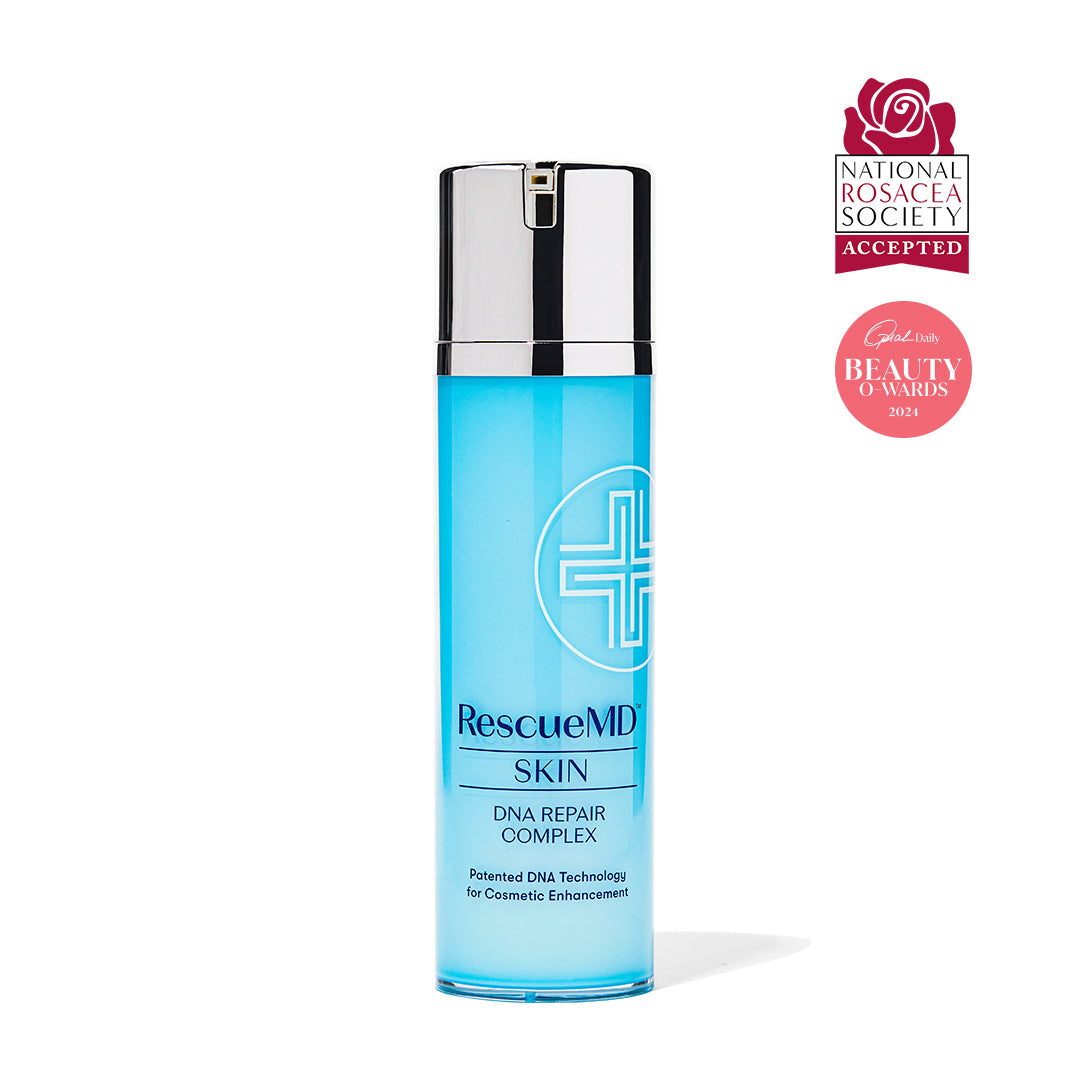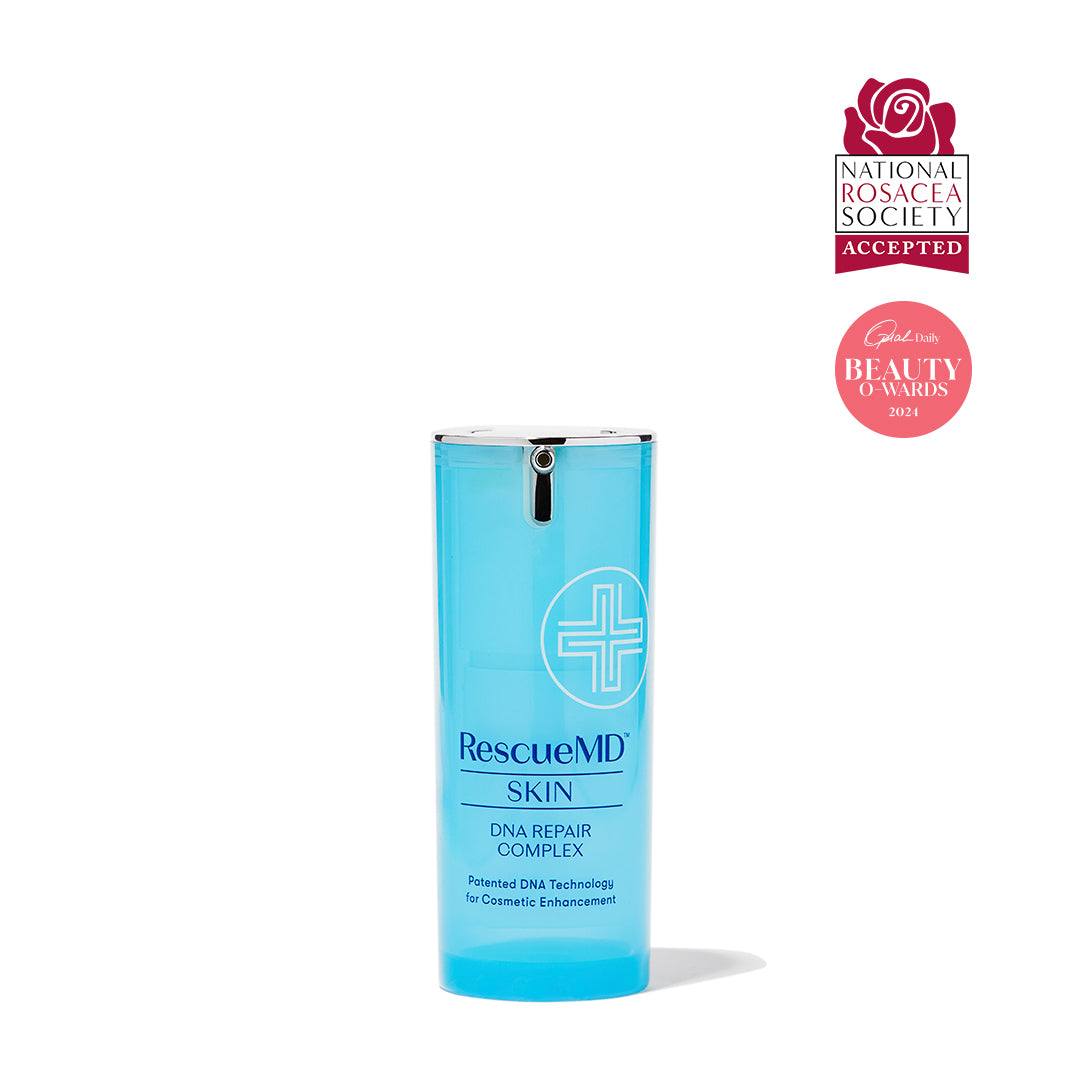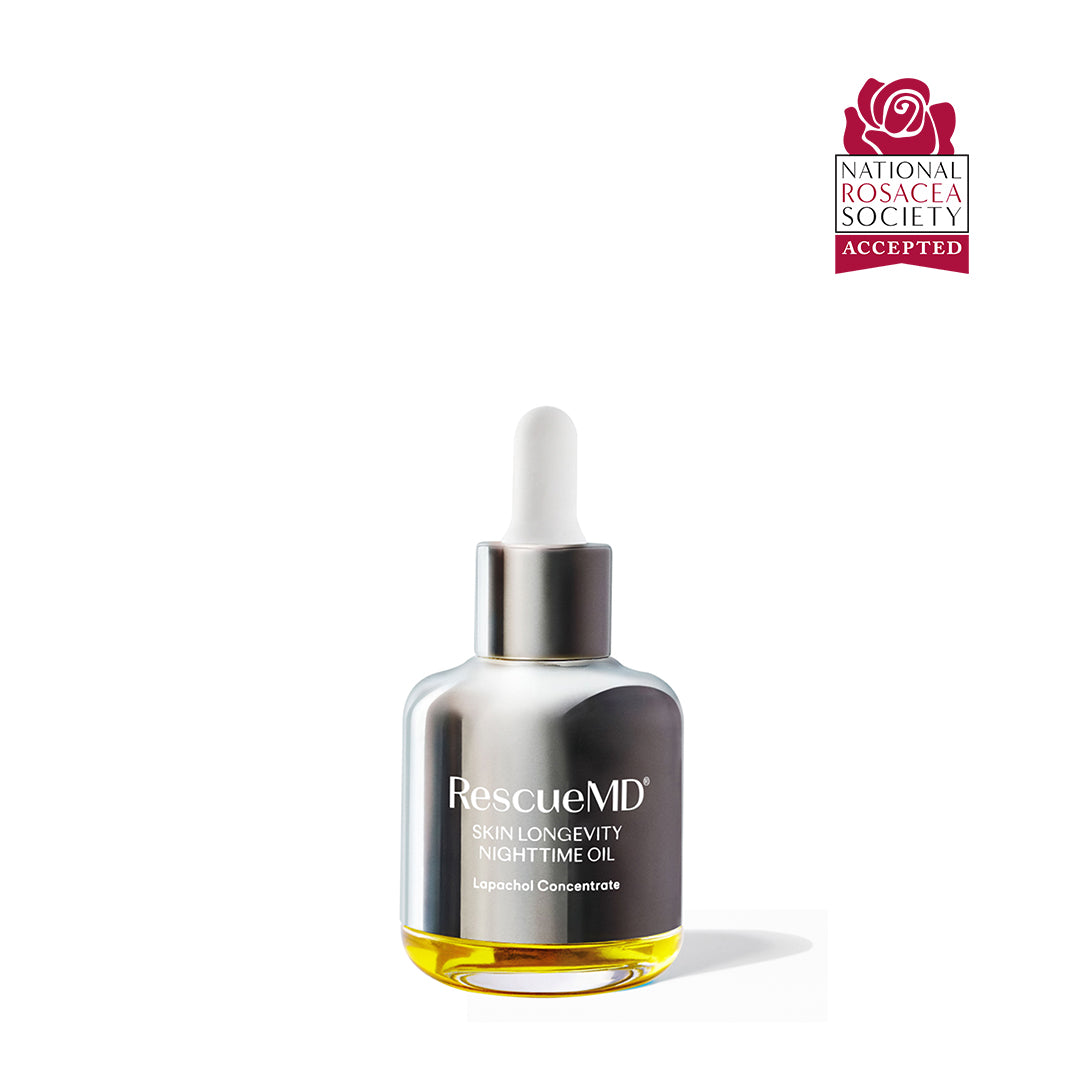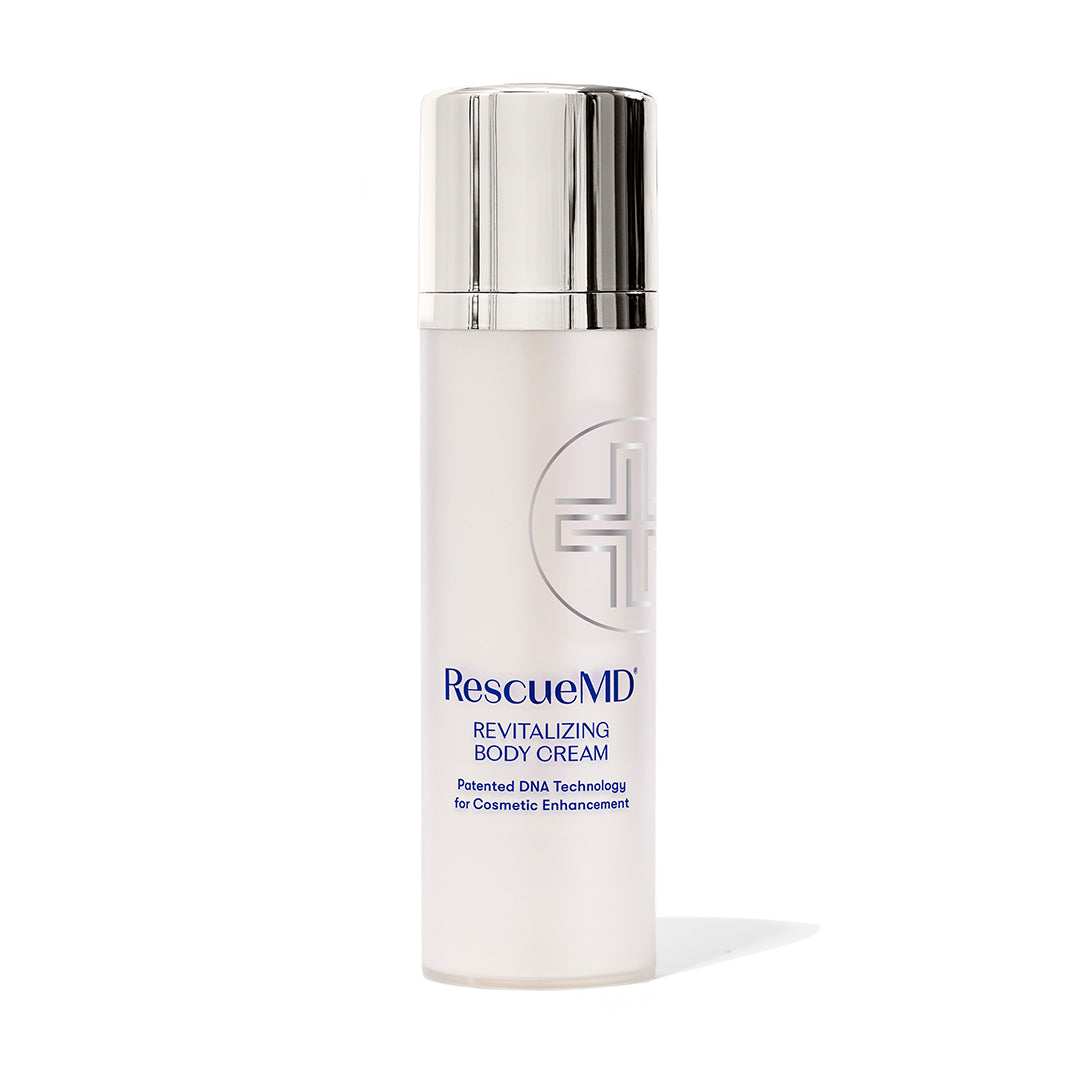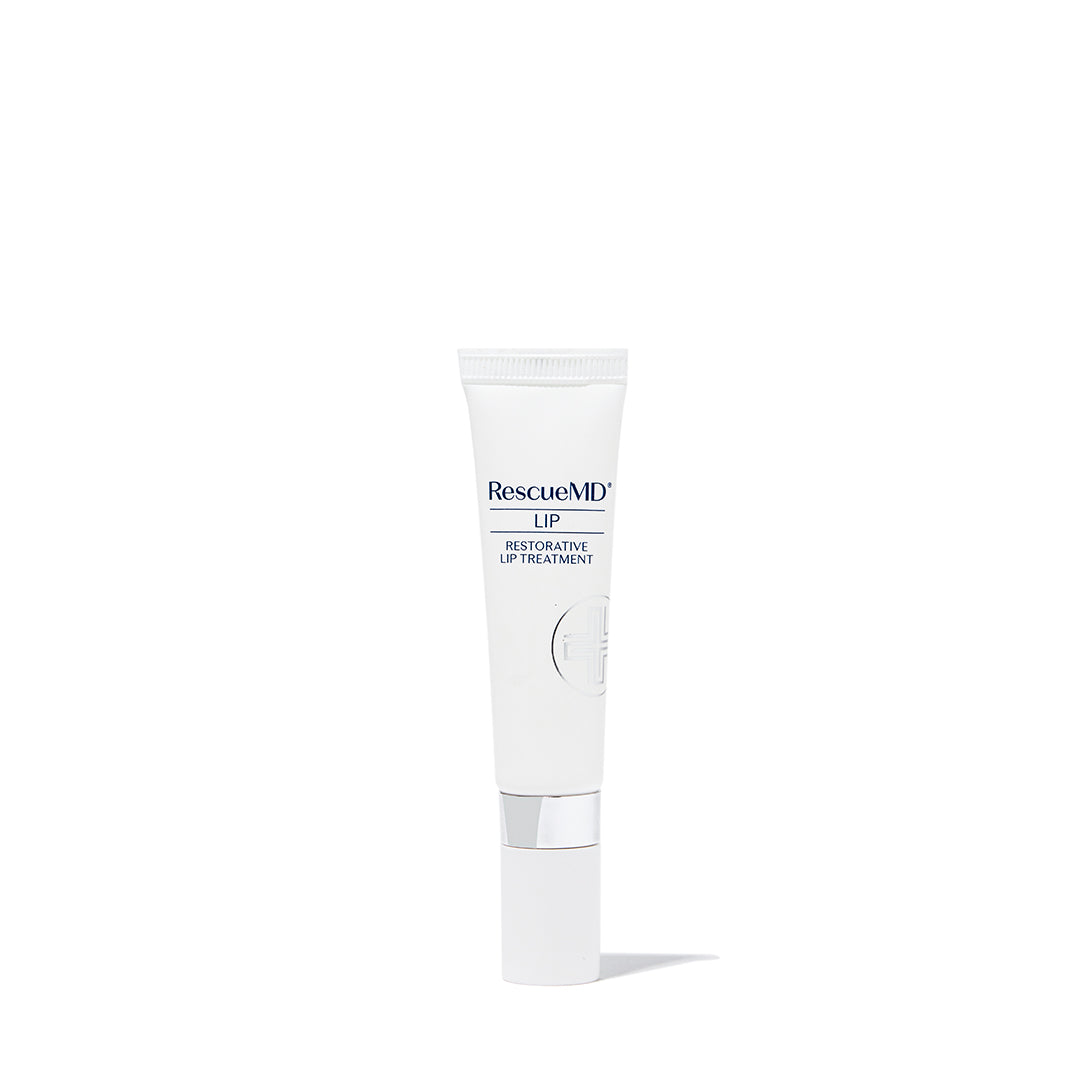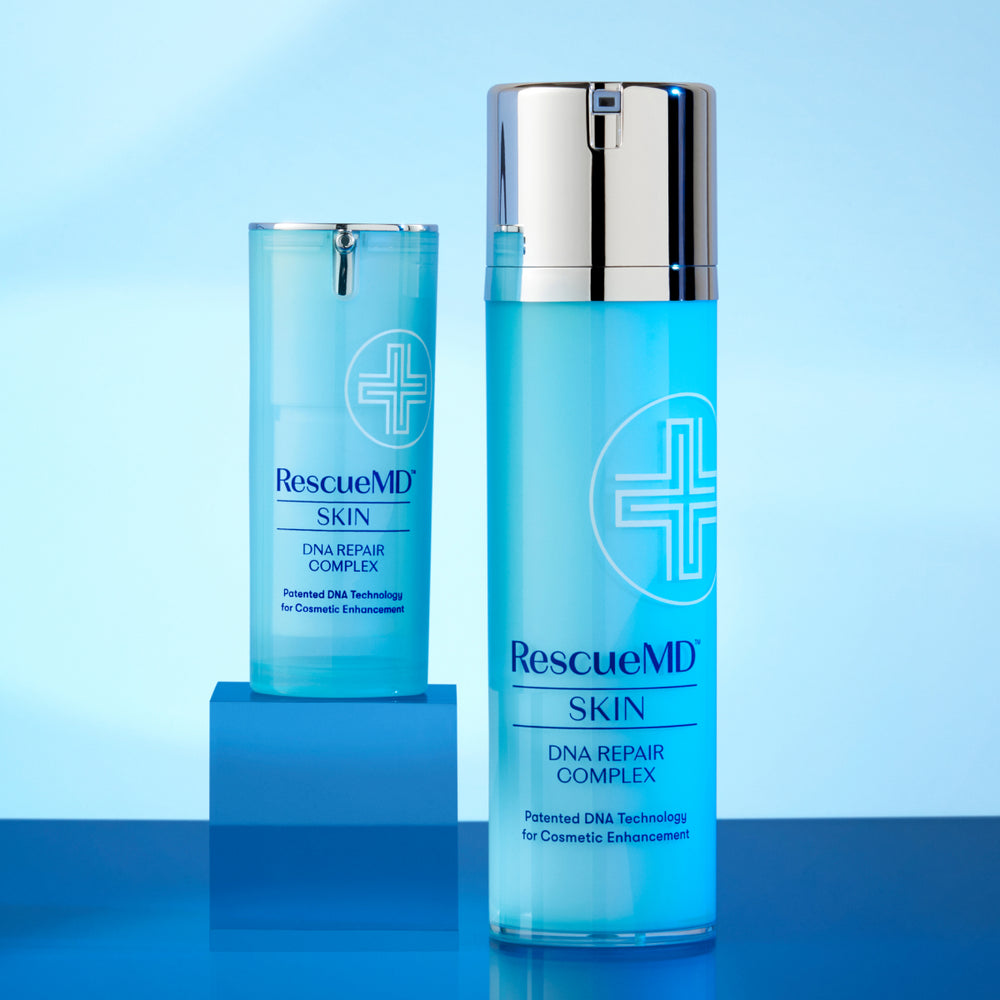Summer is finally here! For many, the summer season is synonymous with long days at the beach, outdoor adventures, and exciting summer travel. Unfortunately, these fun summer days in the sun may also go hand in hand with painful sunburns and other seasonal skin concerns.
Read on to learn more about sunburns, how to enjoy the sun safely, and how to protect and repair your skin after damage inducing UV exposure.
What Is A Sunburn?
Sunburns can happen to the best of us. Even the most sun-savvy individuals may forget to reapply or get caught without shade for an extended period of time leaving us with a painful reminder in the form of a sunburn.
A sunburn is a type of skin damage that occurs due to overexposure to ultraviolet (UV) radiation naturally from the sun or from artificial sources like tanning beds. Sunburns are a common condition that occurs when the skin's cells are damaged by UV rays. When the skin is exposed to excessive UV radiation, it triggers the production of melanin, the pigment responsible for giving the skin its color. Melanin acts as a natural defense mechanism in the skin and helps to absorb and disperse UV radiation, protecting the deeper layers of the skin.
When the amount of UV radiation exceeds the skin's ability to produce enough melanin, it can lead to an unwanted sunburn. UV rays damage the DNA in the skin cells, causing inflammation and an immune response.
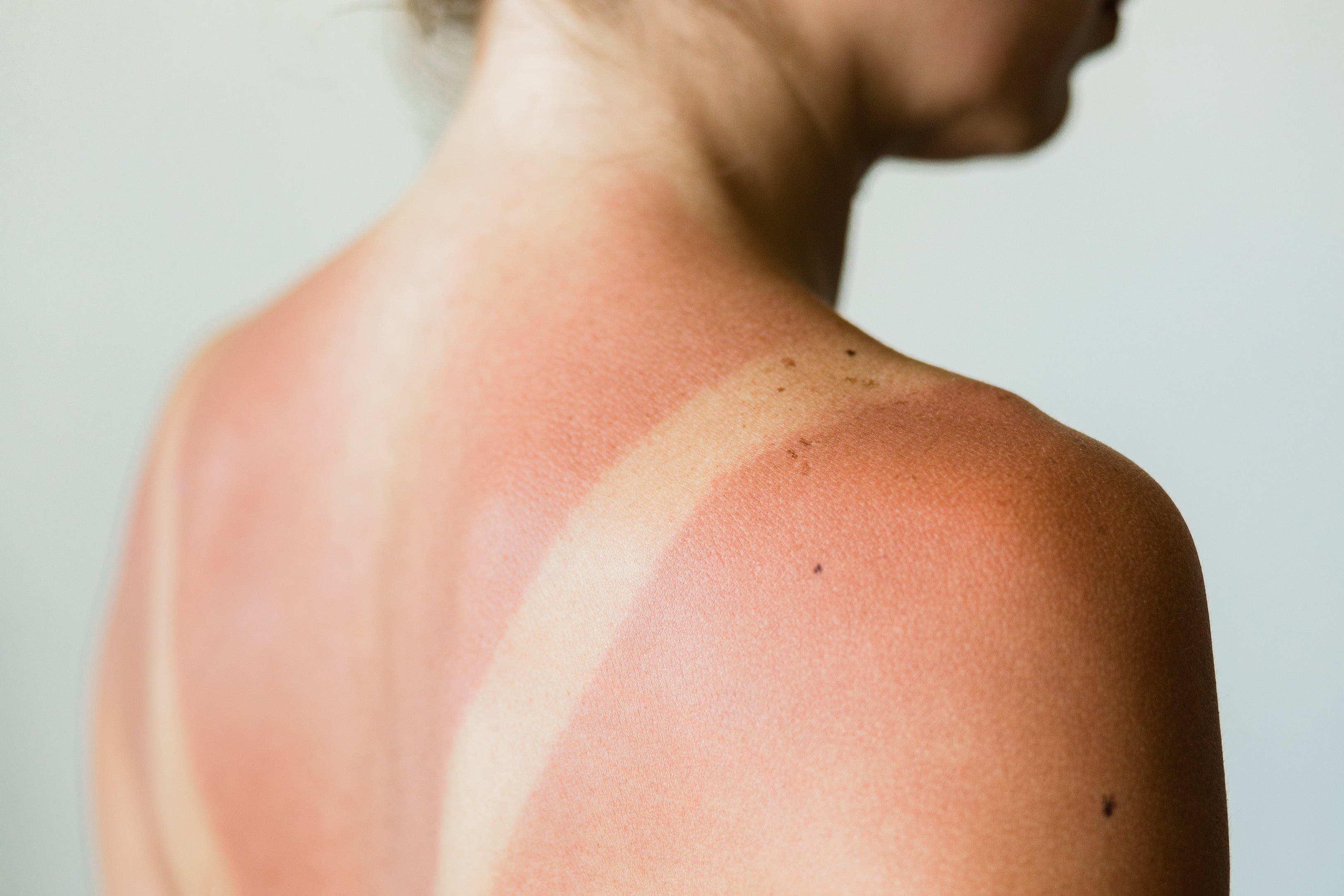
What Are The Different Types Of Ultraviolet Rays And Their Damage To Skin?
When discussing sunburns and skin damage, there are two main types of UV rays most relevant to us that are harmful to your skin: UVA and UVB.
Ultraviolet A (UVA) radiation has a lower amount of energy and the longest wavelength, meaning they affect the skin at a deeper level and can impact the dermis, i.e. the middle layer of your skin. UVA rays make up around 95% of the sun’s UV rays. These rays are mostly responsible for causing premature aging, loss of collagen and elasticity, and can cause indirect damage to DNA. UVA rays cause an immediate tan or burn reaction within the skin. If a delayed burn or tan of the skin occurs 24-48 hours after sun exposure, it is likely a combination of UVA and UVB damage to the skin.
Ultraviolet B (UVB) is a medium energy level UV radiation that affects cells in the top layer of skin and causes sunburn, darkening of the skin, and mutations within DNA that can cause melanoma and other types of skin cancer. This type of UV rays makes up around 5% of the sun's UV rays.
Although it may seem like a temporary condition, sunburn—a result of skin receiving too much exposure from the sun’s ultraviolet (UV) rays—can cause long-lasting damage to the skin. This damage increases a person’s risk for getting skin cancer, making it critical to protect the skin from the sun.
American Academy of Dermatology
While not directly applicable to most people, it’s important to note the presence of another type of UV ray. Ultraviolet C (UVC) has the shortest wavelength and highest energy level out of the three types of UV rays, however, natural exposure to UVC is extremely unlikely for the everyday human. As it’s filtered out by the atmosphere, UVC makes up 0% of UV rays.
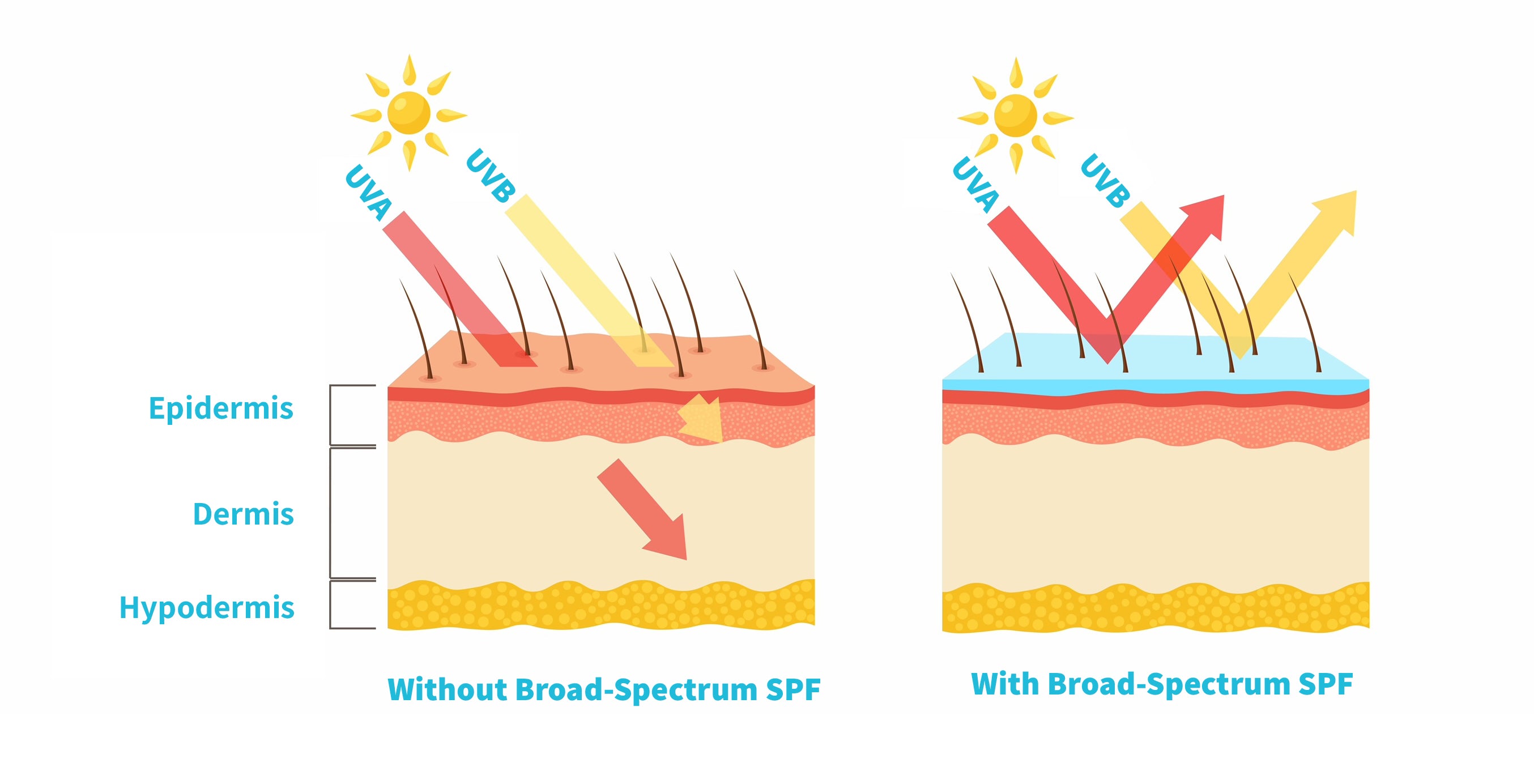
Common Sunburn Symptoms
The symptoms of a sunburn typically appear a few hours after sun exposure and may worsen over the next 24-48 hours. Common signs and symptoms of sunburn include:
- Redness and inflammation
- Swelling
- Pain or tenderness
- Skin that feels hot to the touch
- Cold chills or a cold sensation
- Blistering
- Peeling of the affected area
In addition to these common symptoms, sunburns can also cause fatigue, headache, and sometimes fever in especially severe cases. Always seek the attention of a medical professional if you are experiencing severe symptoms after a sunburn.
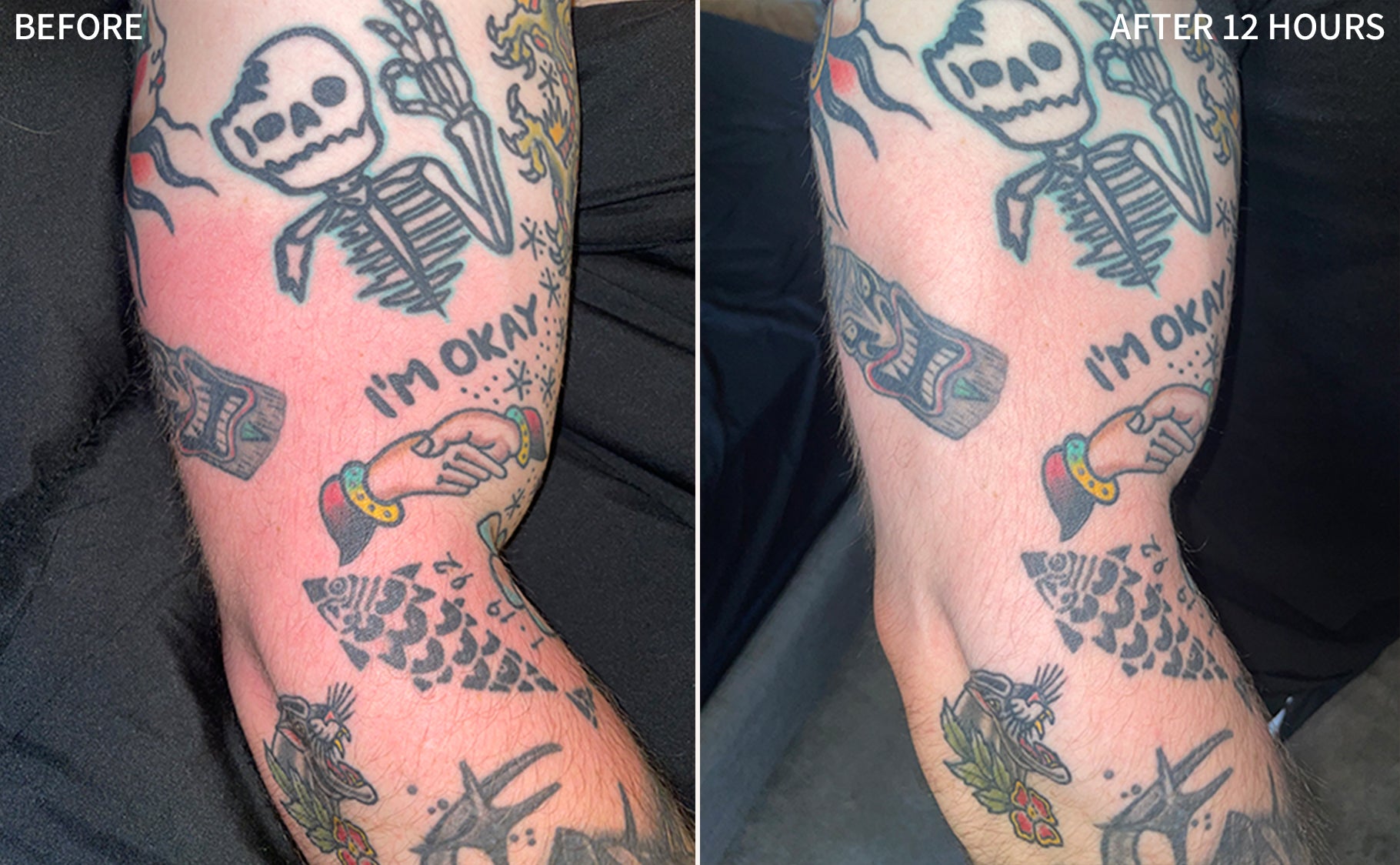
*RescueMD customer submitted photos taken 12 hours apart. Treated with RescueMD DNA Repair Complex.
Team RescueMD’s Recommendation For Safe Sun & Post-Sun Recovery
When it comes to treating and preventing further skin damage from occurring, it is crucial that you practice sun safety! According to The Skin Cancer Foundation, “skin damage builds up over time starting with your very first sunburn. The more you burn, the greater your risk of skin cancer. Subsequent UV damage can occur even when there is no obvious burn.”
Here are Team RescueMD’s top tips to practice safe sun this summer and all year round.
- AVOID PEAK UV HOURS. Check the UV index and use extra caution when out and about. The sun’s UV ray index is typically strongest between 10am to 4pm
- PROTECT AGAINST UVA & UVB. Always use a broad spectrum sunscreen with a rating of 30 or higher! A broad-spectrum formula protects against UVA and UVB rays
- MAKE YOUR SPF APPLICATION COUNT. Many times, individuals will not apply the correct amount of sunscreen required for the SPF to fully do its job leaving them at risk of sunburn and UV damage. Typically, most dermatologists recommend applying one ounce of sunscreen for body coverage (one shot glass), and appy an additional .04 ounces (about half a teaspoon roughly the size of a nickel) to the face and neck for full and complete coverage. Apply your sunscreen thoroughly and as directed for full UVA/UVB protection
An SPF 15 product blocks about 94% of UVB rays; an SPF 30 product blocks 97% of UVB rays; and an SPF 45 product blocks about 98% of rays. Sunscreens with higher SPF ratings block slightly more UVB rays, but none offers 100% protection.
WebMD
- UNDERSTAND PA RATING. When selecting a broad-spectrum sunscreen, look for a high PA (Protection Grade of UVA) rating as the SPF rating measures UVB protection
- WEAR UPF-RATED CLOTHES & ACCESSORIES. In addition to using broad-spectrum SPF, make use of UPF-rated clothing and accessories. UPF (Ultraviolet Protection Factor) is an indicator of how much UVB and UVA radiation the garment allows to reach your skin. A UPF 50 rating is the gold standard as the fabric blocks 98% of the sun's rays and significantly protects against UV radiation
- REAPPLY LIBERALLY. A common mistake people make is forgetting to reapply their SPF! Reapply a generous amount of SPF at a minimum of every two hours, or every 40-80 minutes after sweating or swimming, or as indicated by your SPF of choice
- DON’T FORGET TO PROTECT YOUR EYES. Protecting your eyes from UV radiation is essential for maintaining good eye health and preventing long-term damage. Look for sunglasses that protect against 99-100% of UVA + UVB rays or UV-400 protection
- SEEK SHADE. In addition to your SPF and UPF-rated hats and clothes, an umbrella or sun tent are great options for when you're on the go or exposed without an alternative source of shade available
PA+ = Some UVA protection
PA++ = Moderate UVA protection
PA+++ = High UVA protection
PA++++ = Extremely High UVA protection
- AVOID HOT SHOWERS AFTER A BURN. Take cool showers and baths instead and be sure to moisturize your skin after cleansing right away
- USE THE RIGHT PRODUCTS POST-SUN. Use the right products after sun exposure to soothe and repair your skin. RescueMD DNA Repair Complex is a multi-benefit serum for face + body that reduces irritation and redness and helps fade visible signs of UV damage. For additional cooling relief, put your DNA Repair Complex in the fridge
- DON’T PICK OR PEEL IRRITATED, BURNT SKIN. Keep hands off from your irritated, peeling or blistering skin. Picking at your skin or peeling can leave you susceptible to infection and scarring
- STAY HYDRATED. In addition to keeping your vulnerable skin moisturized and soothed, drink extra water as sunburns draw fluid to the skin's surface leaving you at greater risk of dehydration
- TEMPORARILY ADJUST YOUR SKINCARE ROUTINE POST-BURN. It is not recommended to use actives or physical or chemical exfoliants on sunburnt skin. You may need to consider pausing any topical prescriptions regimens as well. Be sure to check in with your dermatology provider about your skincare routine
Add DNA Repair Complex To Your Summer Skin Rescue Kit
Whether you forgot to apply or reapply your SPF, RescueMD DNA Repair Complex can help soothe angry skin and reduce visible redness and irritation after unprotected exposure to UVA + UVB rays.
In addition to our signature blend of antioxidants and soothing botanicals which provide relief to the skin upon application, our DNA Repair Complex’s ultra-soothing formula includes our proprietary lapachol which targets skin damage at the DNA level.
DNA Repair Complex contains a hand-selected blend of botanical extracts to soothe the skin and reduce redness including extracts from Black Currant, Sunflower, Rosemary + Rosehip and Aloe.
When external environmental stressors like harmful UVA and UVB rays damage healthy skin DNA, the body triggers the DNA replication process by sending signals to certain proteins. At times these proteins work quickly to replicate DNA—too quickly, often making mistakes, which manifest as visible skin damage.
Our proprietary lapachol decelerates and supports the skin DNA’s natural healing process, resulting in a reduction in irritation, redness, and hyperpigmentation after unprotected exposure to UV radiation.
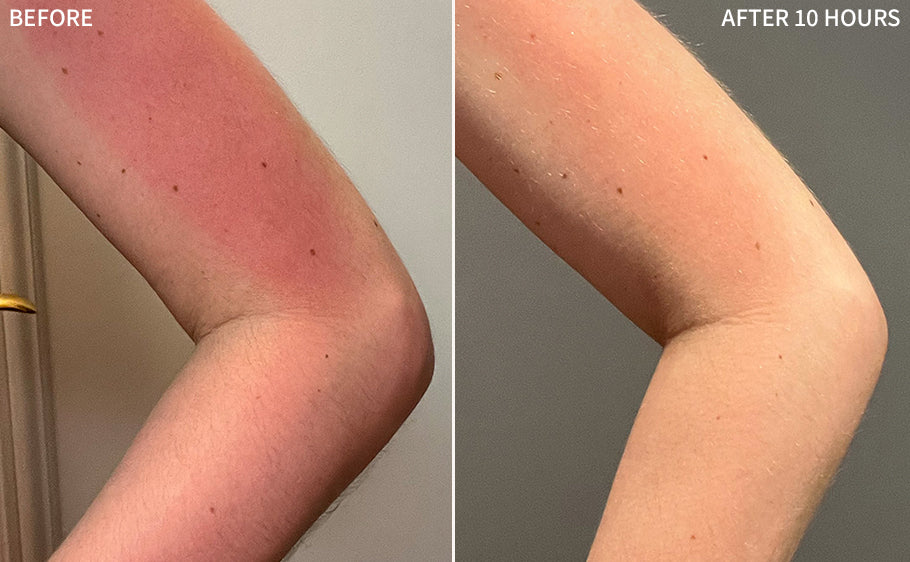
*RescueMD customer submitted photos taken 10 hours apart. Treated overnight with RescueMD DNA Repair Complex.
In addition to supporting and refining the DNA replication process, our exclusive lapachol also has antioxidant properties. Antioxidant properties are particularly key in treating skin damage (including UV damage) naturally. Antioxidants fight back against free radicals, one of the leading causes of skin damage. Lapachol’s multifaceted benefits make it a powerful weapon in your arsenal against skin damage.
Repair visible signs of damaged skin and protect your skin from further damage with twice daily application of RescueMD, your favorite broad-spectrum SPF, and of course, lots of shade!
Check out more before & after cases of sunburn treatment with DNA Repair Complex.
Are you a skincare professional and interested in carrying RescueMD in your practice? Visit our professional page to make an inquiry!


